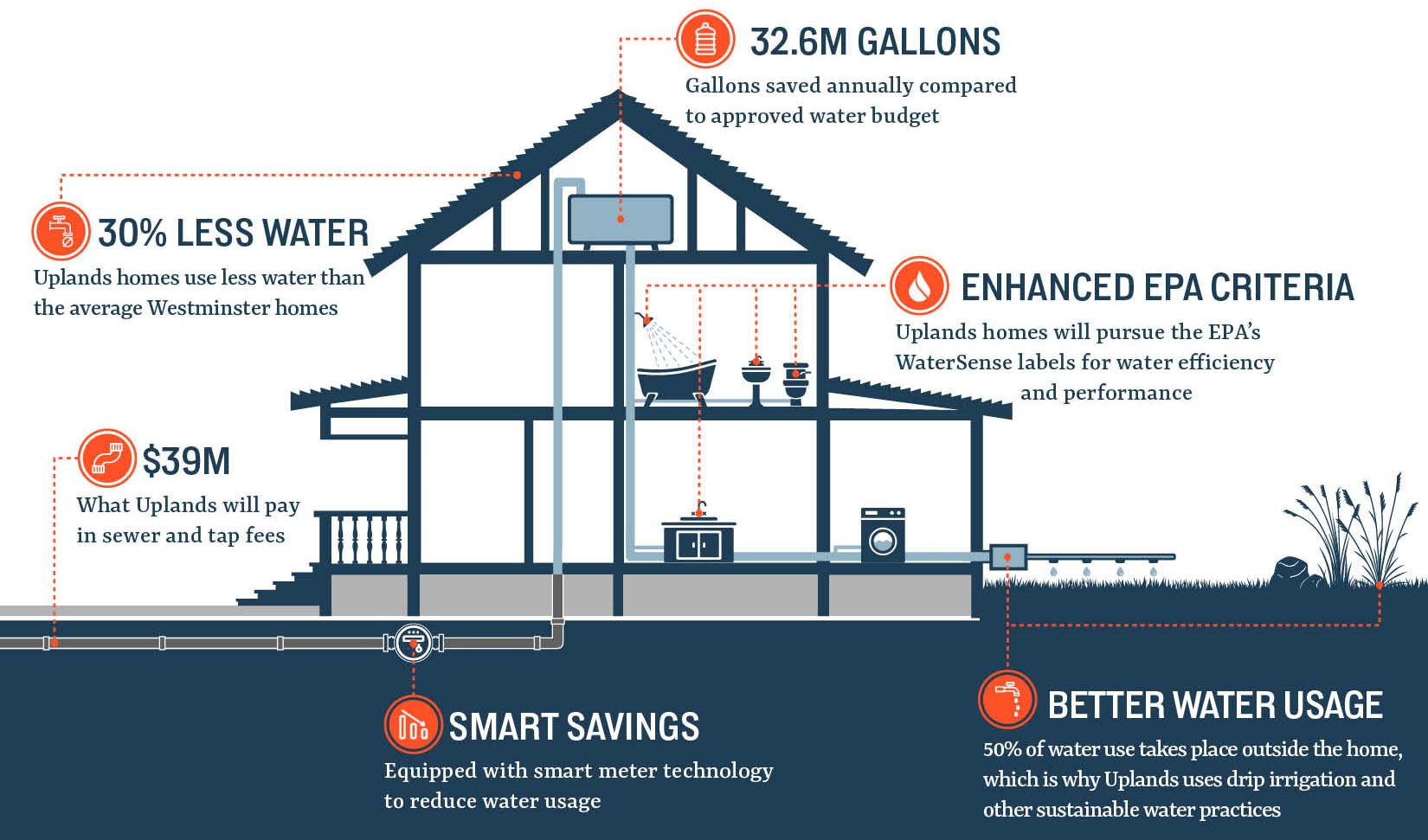The urgency surrounding water conservation efforts in Colorado and throughout the Western United States is intensifying with every passing day. The vast majority of the Western half of the U.S. is currently gripped by a historically severe drought, with the threat of an emerging “megadrought” looming.
Why Water Conservation Measures are More Important Than Ever
As our beautiful state continues attracting new residents — nearly 1 million new residents moved to Colorado between 2010 and 2020 — population growth is creating pressure on our water resources. Even if we closed the doors to Colorado today and allowed no new residents, we would still have a housing shortage of several hundred thousand units. And the lack of sufficient housing will have big implications on traffic, sales tax revenue and carbon emissions.
In Front Range communities, new housing doesn’t have the deep impact that people expect. According to the city of Westminster, “The impacts of adding new customers to the City’s system are small in comparison to the effects that future droughts would have on the City’s water supply. For all water users, conservation measures remain the best way to protect our water supply long-term.”
And that is likely because Westminster is a community mostly consisting of large-lot single-family homes (since 2003, the vast majority of permits and units developed in Westminster — 86% on average — have been single-family homes) that consume significant amounts of water. In fact, a study from Colorado State University revealed that outdoor water use accounts for about 55% of the residential water use in urban areas along the Front Range, most of which is used on turf. With such a significant percentage of our water being used to satisfy the typical demands of our home’s lawn, considering how to wisely use water and prioritizing conservation is essential to protecting our water for future generations.
For years, think tanks like the Urban Land Institute have joined with environmental organizations like the Sierra Club to call for greater sustainability in new and existing housing developments, and we now have the best practices, resources and commitment to do so.
It’s time for policymakers, town planners and developers across Colorado to bring a greater urgency to embrace new home construction practices and technologies that can prepare our communities for a rapidly changing climate.

4 Things Developers Can Do to Lead on Water Conservation
#1. Pursue WaterSense Label
The U.S Environmental Protection Agency’s WaterSense program sets the standard in water-efficient products and appliances. Homes and fixtures that meet the EPA’s enhanced criteria are 20% more water-efficient than average products in that category and provide measurable water savings results.
#2. Reduce Outdoor Water Usage
According to the EPA, outdoor water use accounts for more than 30% of total household water use, on average, but can be as much as 60% in arid regions. From our lawns to golf courses and beyond, as much as 50% of the water we use outdoors is lost due to wind, evaporation and runoff. Efficient modern irrigation systems and permaculture landscaping are just two of the many tools increasingly used to conserve water.
#3. Smart Meters and Smart Communities
With the growth of 5G, more communities have the opportunity to utilize a range of Wi-Fi-enabled smart meters and water technology that demonstrably reduce water usage in real time. Connected to a larger network called the “internet of things,” or IoT, smart water meters reduce water losses in the entire water distribution network and allow utilities to track and manage the demand for water.
#4. Smaller Lot Sizes Drive Substantial Water Savings
Large lot, low-density and dispersed development increases water use, while mixed-use, higher-density development promotes significant water savings through a strategy of water-smart growth. While some argue the environmental impacts of development can make it more difficult for communities to protect their natural resources, research repeatedly shows that increasing housing density encourages water conservation, with the EPA noting that “increasing development densities is one strategy communities can use to minimize regional water quality impacts.”
There are a number of strategies and best practices that policymakers, urban planners and developers can take on to increase water conservation. These four strategies represent just a handful of the options available to ensure that our natural resources can continue to be enjoyed by future generations.